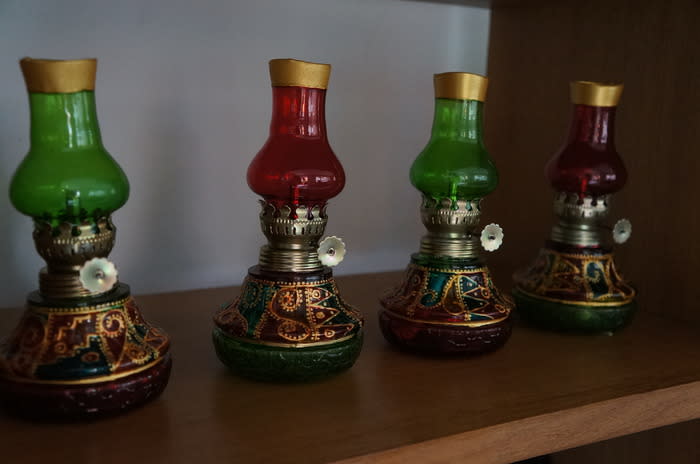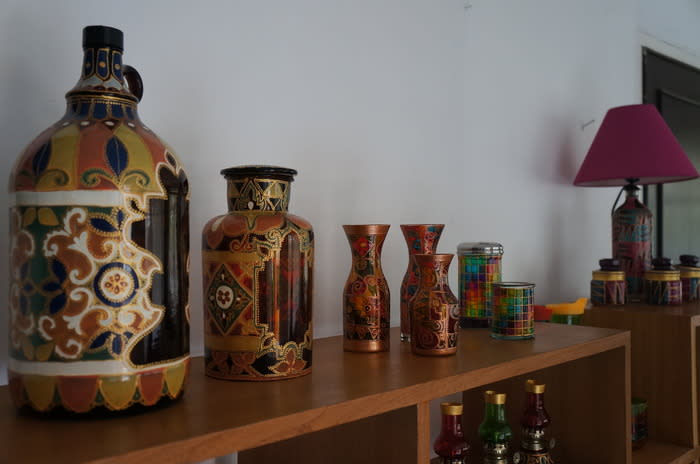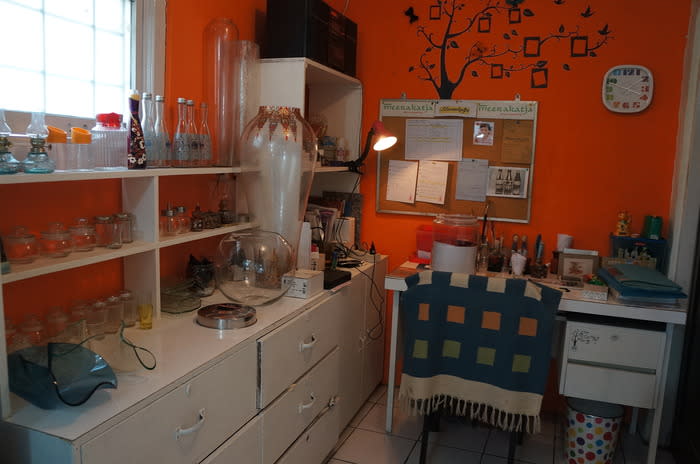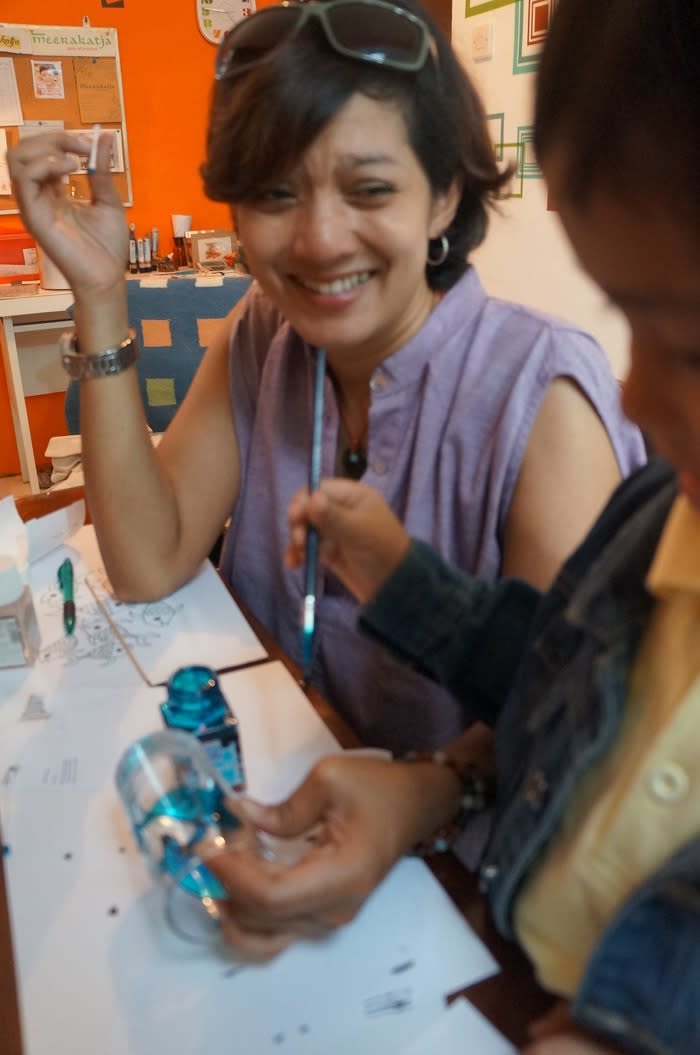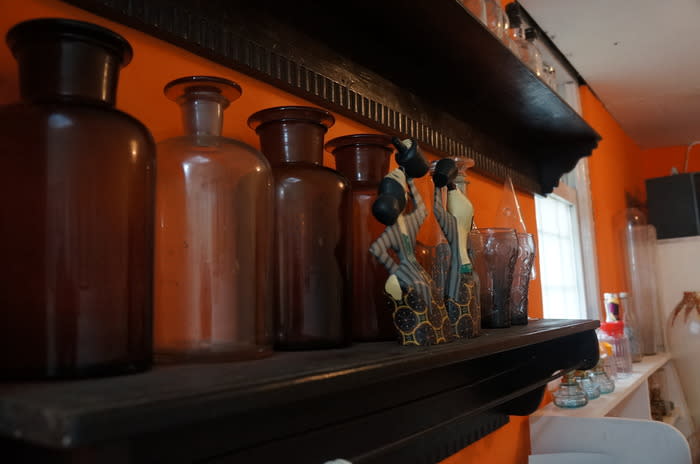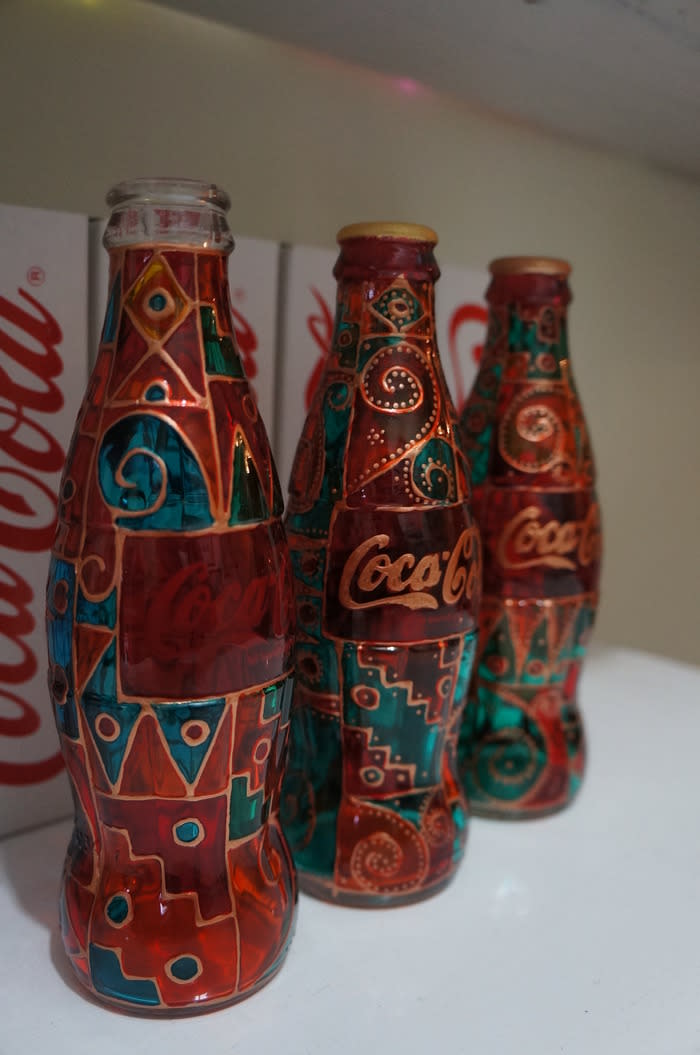Meerakatja: the art of waiting
“It all started by accident,” said Ratna ‘Mira’ Miranti, as she opened our conversation about her initiation into the art of glass painting.
Mira was at first looking to buy fabric paint, but, as she was in a rush when she went shopping, she had failed to realize that what she bought was actually paint for glass.
She then decided to make the best out of the situation and began experimenting with the paint.
To her surprise, painting on glass turned out to be a lot of fun – so much, in fact, that she then took a short course on the subject and even decided to take up the art form seriously.
“I think [most Indonesian] artists do not take glass art painting seriously because they do not know the market for the products” she said while demonstrating the art, step by step.
Mira took textile design as her major at the Bandung Institute of Technology (ITB); she worked in the textile industry right after she graduated.
“The market in the textile industry is already defined. You cannot go wrong [there]. You know how it works. But glass art painting is something different,” she said.
Seen in a more optimistic light, however, she thinks the glass painting path offers vast opportunities and little competition.
The first step in glass painting is to outline the picture by using a technique called konturen-past. This technique requires one to draw on a piece of paper before putting the paper inside the glass and tracing the drawing from outside.
The lining process is supposedly easy for common types of glass, but may be difficult for glass with delicate patterns or engravings, contoured surfaces, or with small openings to put the drawing inside.
“After we create the lining, we have to make sure that the lining is completely dry before we start to paint it,” Mira said.
Mira showed me an unusual cabinet equipped with lighting to expedite the glass drying process, “We cannot depend on the sun to dry the lining…” she said. This is exacerbated by Bandung’s unpredictable weather.
More patience is needed in the final stage of the glass painting process, as we should wait for the applied paint to dry.
Mira had tried to speed up the process by using an oven, but the glass cracked because of its inability to withstand the heat.
Although it may sound easy and simple to do, sometimes the temptation is to immediately move on to the next step, she said.
“Waiting is crucial in glass art painting,” Mira said. “Waiting is painful as you want to move on right away to the next step and get it done, especially if you have a deadline to reach.”
Another technique to master glass art painting is to hold your breath, especially when you do the outlining, added Mira. “You will get better lines if you do it while holding your breath.”
Beginners can take hours to master the technique, but her polished skills allow her to tackle the task in a blink of the eye. “I often lose track of the time and become disconnected from my surroundings when I am painting,” she said.
Mira prefers to paint by using a bamboo stick instead of brushes because, according to her, it creates a better result.
Recently, she completed a glass painting project for a giant soft drink company, where she outlined freestyle painting for more than 1,500 glass-made soft-drink bottles.
“The bottle had a delicate texture and its opening was too small, so it was very hard to put the pattern design inside the bottle,” Mira said as she recalled the sleep deprivation and the stress related to the project.
She drew inspiration from a number of traditional patterns such as batik patterns from Pekalongan, Central Java, and patterns from Papua, to combine with her own design. In the end, the results were quite satisfactory, she said.
“Glass art painting is surely time consuming and you cannot hurry the process. All of these are handmade so each piece of glass painting is special. So it is really frustrating when customers bargain too low,” Mira said.
Nevertheless, her spirits are uplifted time and again by customers acknowledging and admiring her labor.
Meerakatja is participating in the ongoing national craft exhibition Inacraft, held at the Jakarta Convention Center.
Meerakatja, glass art painting, by Ratna Miranti is located on Jl. Sangkuriang K-3, Bandung. It offers a workshop for private participants, group, or children with costs starting from Rp 100,000 (US$10.32) for a children’s short course.
Read also:


